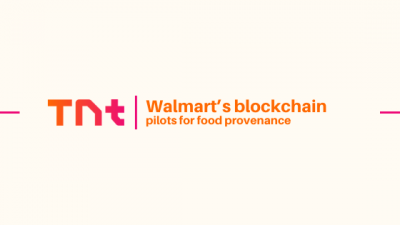Secure content delivery across platforms is perhaps the largest problem for consumers, distributors, and content creators in the modern digital age. Multi DRM (Digital Rights Management) becomes an important key in securing content so that it is protected when being delivered across various platforms. By using multi drm, intellectual property owners can protect their intellectual property from misuse, abuse, and piracy. With the complexity of modern digital ecosystems on which the content is played back on different platforms and devices growing, there has been a need to offer a robust, multi-level security mechanism. Here, multi-DRM fills this gap and provides a solution suitable for the vast majority of platforms, devices, and diverse user tastes. As digital media continues to grow in popularity, multi-DRM is more and more required by consumers and content providers to have the capability of reaching secure and seamless experiences.
- Why is Multi-DRM Important: The demand for multi-DRM is based on the increasing need for content providers to lock down their media on numerous platforms and devices. Older DRM technologies, developed to safeguard content on individual platforms, are not sufficient to handle the complexity of digital distribution systems today. With content being watched on anything from tablets to smart TVs and smartphones, there is a need for a solution that can operate across multiple ecosystems. Multi-DRM does this by offering content protection across multiple ecosystems without the use of one-off, platform-specific solutions. This matters because it gives content providers more control over their media distribution, reducing the opportunity for piracy and misuse. Content providers would be responsible for keeping content from being copied or dispersed in an unauthorized manner without multi-DRM, especially when content is streamed or downloaded on several devices.
- Providing Platform Support: The multi-DRM benefit lies in its capability to support an array of platforms simultaneously. Be it streaming channels, content that is being downloaded to watch later offline, or mobile app consumption, the multi-DRM ensures the security aspect plays well with such a platform. This is less burdensome to content providers, as they would otherwise have to implement different different DRM solutions on each platform. The doverunner technology inherent in multi-DRM systems assists by offering uniform protection for all devices supported. Thus, the customer receives a better experience with no visible effect on content quality, and the content creator can rest assured that his intellectual property is secure.
- Making Content Easy to Transfer Across Devices: As digital streaming and online content consumption gain more attraction, content must be made transferable across devices. Multi-DRM allows it to be ensured that the same content is available to users on numerous devices, from smartphones to notebooks to smart TVs, and yet keeping it highly secure. Without multi-DRM, the content suppliers would be in deep trouble with having their media securely placed on each device. For instance, if a movie streamed on a mobile phone is not encrypted, it will be pirated easily and sent to other users. But by multi-DRM, security, and encryption are applied so that illegal consumers cannot see the content even on their favorite device.
- Avoidance of Piracy and Unauthorized Usage: Multi-DRM assists in reducing the issue by complicating it for pirates to secure and distribute locked content. Due to the utilization of diverse layers of safety at different stages, multi-DRM protects content such that if an element of defense is compromised, content is still protected. Second, multi-DRM also tends to feature watermarking, tracking, and real-time analysis that also help in detecting and preventing unauthorized dissemination of content. These features are also critical to piracy prevention as they enable the content providers to track the source of pirated copies and take necessary action accordingly. This software supports both downloadable media and live streaming, i.e., this is an end-to-end solution for every kind of media.
- Simplifying Content Licensing: Content licensing has always been a complex task, with every platform having some other type of licensing configuration and protection system. Multi-DRM simplifies this by allowing content distributors to aggregate all their licenses within one platform. What this achieves is that content providers will not have to negotiate separate deals with every platform on which they provide content. They can instead use multi-DRM so that their content is covered under the same license arrangement, wherever the content is being consumed. This reduces administrative inconvenience and meets all the legal and regulatory compliance.
- Providing Richer User Experience: One of such myths regarding DRM systems is that they compromise the user experience. However, multi-DRM technology is designed to make the consumers feel smooth without any compromise in the issue of strong protection for the content. With multi-DRM, the user will no longer have to worry about whether or not the platform or device will play. No matter if they hear music streamed on their phone or watch a video streamed on their tablet, multi-DRM secures the content without disrupting the customer experience.
- Future of Content Protection: As the online world continues to evolve, the use of multi-DRM across content delivery continues to expand. As emerging technologies such as virtual reality and augmented reality continue to erase the boundaries of what is mainstream, content owners will find themselves having to protect their intellectual property on more and more devices and platforms. Multi-DRM solutions are likely to meet such future demands by having scalable solutions that can accommodate evolving technologies. In addition, with the growing demands for content security and quality from consumers, multi-DRM is an important feature to allow content to become secured without at the same time refusing users access to what they need.
Conclusion
In a nutshell, multi-DRM is not just an added security feature for content providers but a necessary piece of equipment for securing and distributing content to multiple platforms and devices. By offering complete protection, enabling content licensing, and maximizing the user experience, multi-DRM systems offer great value to both content owners and consumers. The doverunner technology within multi-DRM further enhances this protection, ensuring that content is secured seamlessly across different platforms. As the digital media landscape keeps evolving, utilization of multi-DRM solutions will rise even more in anti-piracy prevention, offering compliance with licensing agreements, and protecting digital content. Greater adoption of multi-DRM indicates its central role in safeguarding intellectual property and creating a secure and open digital media environment, which will continue to shape the future of online content delivery.
Information contained on this page is provided by an independent third-party content provider. Binary News Network and this Site make no warranties or representations in connection therewith. If you are affiliated with this page and would like it removed please contact [email protected]



Comments